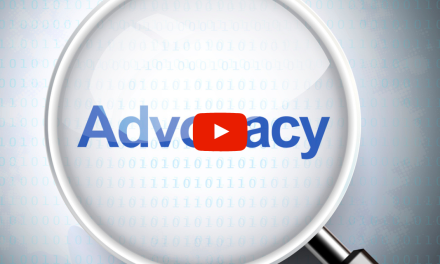
The Cures Act: Sharing Records – It’s a Two-Way Street

“Hiding within those mounds of data is knowledge that could change the life of a patient, or change the world.” – Atul Butte, Stanford Medicine (July 2012).
The age of big data is already here, and the chiropractic profession will see powerful research reflecting improved patient outcomes and resulting in professional advancement. Imagine being able to have a new patient’s full medical history at your fingertips without delay. Imagine being able to review millions of patient records (protected, of course) and compare the efficacy of treatment provided in a chiropractic office against other treatments for specific diagnoses. Imagine if patients were more fully informed about their overall health treatments, along with cost comparisons and outcomes. It is within this big data world that the chiropractic profession’s contribution to the overall health of patients will soar. Previously, we struggled with how to get there, but the Cures Act has defined a method for greater inclusion, better research, and more informed patients.
The Illinois Chiropractic Society previously provided some baseline information to Illinois doctors about the 21st Century CURES Act in February. The Cures Act, whose major provisions begin on April 5, 2021, is designed to promote “innovation in the health care technology ecosystem to deliver better information, more conveniently, to patients and clinicians. It also promotes transparency, using modern computers, smartphones, and software to provide opportunities for the American public to regain visibility in the services, quality, and costs of health care.”[i] In other words, the new law aims to promote the use of new technology to make it easier for patients and their providers to obtain and transfer their medical information.
What is Interoperability?
One of the key subjects of the Cures Act is why, how, and when healthcare information is shared with patients, other providers, and even other health information technology providers. This is “interoperability,” which is defined as the secure exchange of electronic health information with other health information technology, without special effort on the part of the user, which allows for complete access, exchange, and use of all electronically accessible health information.[ii] Basically, interoperability will: allow patients to access their medical records, using any number of different apps or methods; allow healthcare providers to access their patients’ records more quickly for better diagnosis and decision-making, and allow researchers the ability to analyze trillions of de-identified patient records and data sets to improve overall healthcare. The cures act begins initial implementation on April 5, 2021, and over the ensuing two years will increase the types of required data sharing.
The Office of the National Coordinator for Health Information Technology (ONC) states, “The nation relies on Health IT to securely, efficiently, and effectively share electronic health information with patient consent to achieve better care, smarter spending, and healthier people. Interoperability will transform our health system from a static one to a learning health system that improves individual, community and population health.”[iii]
The Cures Act implements several provisions that impact health IT developers, health information exchanges, and health providers (all defined and referred to in the Act as “actors”). In short, all three categories of “actors” have requirements and obligations to improve interoperability.
How Will This Impact My Patients?
“Seamless and secure access, exchange, and use of electronic health information by patients and providers alike is a game-changer. Opening the silos of healthcare data allows patients more choices, improves outcomes, and lowers the healthcare costs. Chiropractors will have a whole new world in which to understand their patients’ health and be perfectly positioned to deliver even higher quality care.” – Jay Greenstein, DC, Kaizovate Founder
Patients see a wide variety of healthcare providers, and their health is dependent on a wide variety of care. However, proper diagnosis and optimal care depend on each provider having access to a full, unimpeded understanding of the full range of health care diagnoses and treatments that patients are receiving from all of their providers. In short, providers can make better decisions for their patients when they have the patient’s full health care picture. Interoperability is the critical conduit for this health information communication.
Interoperability provides chiropractic physicians the opportunity to instantly access the full range of medical records for patients, regardless of where or by whom the care was provided. It also allows us to contribute to the patient’s full medical record by including the chiropractic physician’s electronic health information. It provides our patients with increased quality of care while affording greater practice efficiency, increased productivity with reduced costs, and the potential for fewer errors. It is a win/win for both patients and chiropractic physicians.
Additionally, interoperability provides the patient the opportunity to be able to see all of their care records in one place. Patients are increasingly using apps to monitor their health, healthcare, appointments, and health reminders. They expect to have access to the information that chiropractic physicians have in their EHR and billing systems.
What About Health Information Exchanges or Networks?
The Cures Act helps to level the playing field for chiropractic physicians because Health Information Exchanges (HIE) and Health Information Networks (HIN) will be open for all healthcare providers. This will allow chiropractic physicians to both contribute to the networks and access the networks for full patient records, even though the D.C. may be unaffiliated with the other providers.
How Will this Impact the Profession?
In addition to the continued improvement of patient care, the availability of de-identified healthcare data would be a game-changer. Healthcare analytics is designed to leverage artificial intelligence to analyze millions of patient records, find commonalities, and discover valuable results. Imagine being able to review all patients with a particular condition and be able to determine the full efficacy of treatments provided to those patients.
The already proven efficacy of chiropractic, in terms of both outcomes and cost-effectiveness, could be objectively analyzed, not just in the short term, but through a long-term, multidisciplinary examination of millions of patients and billions of patient records. We would be able to more clearly demonstrate to the world the incredible value that chiropractic care brings to our patients and the healthcare world.
Conclusion
The Cures Act paves the way for greater communication with patients, other providers, researchers, and data analytics companies. The law requires some adaptations by all physician offices, including those of chiropractic physicians, but the benefits to the profession and our patients will be extraordinary and provide a pathway to better outcomes with more
Related articles:
Increased Patient Access to Health Records – the Cures Act
The Cures Act: Sharing Records – It’s A Two-Way Street
Information Blocking and the Patient’s Records
Avoiding Information Blocking: A How-to Guide to Sharing Health Information Properly
References
[i] https://www.healthit.gov/curesrule/overview/about-oncs-cures-act-final-rule
[ii] https://www.healthit.gov/topic/interoperability
[iii] https://www.healthit.gov/sites/default/files/2019-08/shared_nationwide_interoperability_roadmap.pdf


















